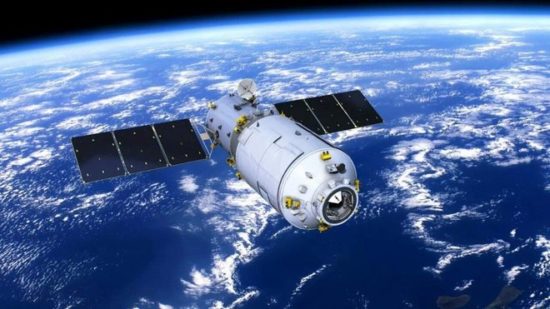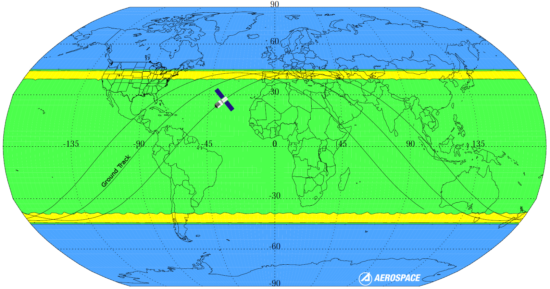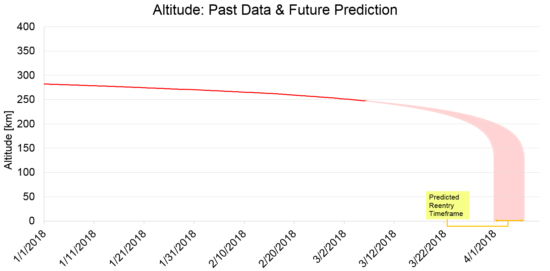Oh, boy. If only reporters checked with anyone who knows orbital mechanics before writing stories like this:
Chinese satellite filled with corrosive fuel could hit lower Michigan
The orbital decay of the Chinese space station Tiangong-1 will lead to its uncontrolled reentry around April. The green and yellow areas on the following map show where the satellite might hit…somewhere:
Now, because of the inclination of the orbit (the highest latitude it reaches), the yellow areas have a higher probability of being hit than the green area…per square mile. But the green area is a whole lot bigger than the yellow area.
As a result, past experience has shown that these satellites usually reenter over the ocean…usually the Pacific. It’s a really big area.
As the satellite falls, it encounters more atmospheric drag (anyone see the movie Gravity?) The resulting enhanced orbital decay then becomes very rapid, and the satellite burns up. But the point at which this happens is unpredictable. If the reentry prediction is off by, say, 50 minutes (a half orbit), the satellite will reenter on the opposite side of the Earth (!)
Here’s a recent reentry window forecast from the Aerospace Corporation…note the window is about 6 days wide. And, again… a 50 minute error in the prediction means the other side of the world:
So, to do a news story that the satellite might hit Lower Michigan… well… that takes an extra dose of either moxey or idiocy.

 Home/Blog
Home/Blog






